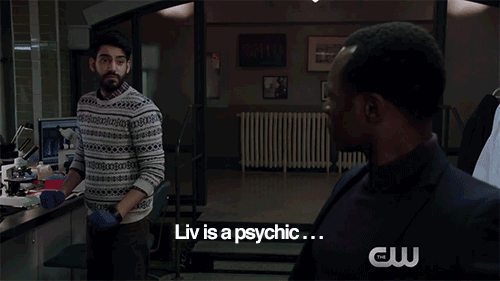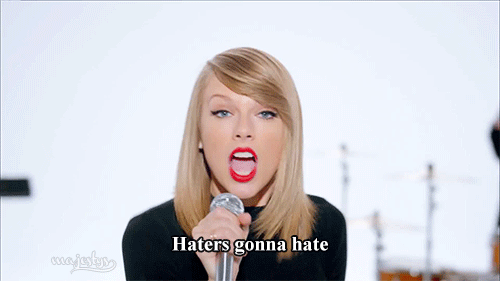I’m going to talk about two Paranormal Police Procedurals that I watch that are adaptations from comics,
iZombie and
Lucifer. While I enjoy both of them, I worry about this adaptation trend. This isn’t a bad way to adapt comics but is in some ways lazy. Rather than dealing with the
complexity inherent in the stories of the source material TV adaptors just take a known structure and add the comic characters. This isn’t always the case with comic adaptations, such as
The Walking Dead, but with two series using this same formula within two television seasons it’s starting to become suspicious.
Beyond that structure, they are interesting shows in their own right but, like Sleepy Hollow, it is their likely paranormal premises that will determine the endurance of their shows. Like Sleepy Hollow, which shares the same network, Lucifer draws from Judeo-Christian roots for their paranormal world. iZombie, the show, draws from Zombie lore, exclusively. This comes in contrast to the comic, which combines zombies, were-beings, ghosts, and vampires into one “undead” group depending on how the two souls of a human leave the body. The show has yet to, and may never, explore this aspect of the comic.
iZombie is my current favorite of the two. iZombie has it’s problems, some of which I touched on in a
previous blog, but it’s paranormal premise allows for a very long run of the show. If there are infinite murders, there are infinite possible personalities that Liv can take on and we can have a show that every week is fresh and different as long as the writers continue to write interesting people that get murdered. This pattern can get boring, as there’s no reason to keep watching if it’s always different, but the writers have created 3-4 subplots that allow the series to fit this system without going out of style. Those are:
1) Zombie-ism is related to a drug
2) That drug is big business
3) Zombie-ism is big business
4) There is a big corporation trying to do something with zombie-ism and energy drinks
5) Zombie-ism is virus based so a cure is possible.
While this seems complex and perhaps too many plots for one show, it allows links between episodes that vary depending on the amounts of each subplot and moves both over-arching and within episode plots. Once these are resolved it’s not improbable that the Zombie stories start to reach outside Seattle, for individuals and issues farther afield, but at its present pace it seems unlikely that they’ll resolve all these plotlines soon.

Now onto Lucifer. Lucifer is good, well he’s actually bad, well actually he’s sort of himself and really putting a value on what he is or is not doing really isn’t valuable. Anyways, the show is funny and Lucifer is charming although it occasionally falls back on tropes. These tropes and it’s use of a Judeo-Christian paranormal premise, like Sleepy Hollow, make me question how long the show will hang around. While there are police sub-plots developing in Lucifer, these are not unique to the PPP genre and don’t really utilize what makes PPPs interesting. From that, the biggest problem I foresee with Lucifer is what the actual paranormal sub-plot is and how long can this actually go on for. Lucifer’s only sub-plot, that connects each week, is the will-he-or-won’t-he go back into the Hell business. This is probably related to the sub-plot of why-the-hell-pun-intended-is-officer-Decker-not-subject-to-Lucifer’s-powers but at this point we don’t know. The problem with this is that, even though beings from heaven have as long as they’d like to wax poetic and be will-the-or-won’t-they about God, it can only go on for so long before audiences are bored.
Therefore, if he goes back the show ends or he does some sort of weird and probably not satisfying part-time thing and if he doesn’t go back then we keep playing this game, no reason why God should stop pestering him, and my assumption would be that Lucifer loses his powers. Which may begin a cycle of, “Oh no I’d like those back please” that reignites the previous yes/no on Hell discussion. There are more possibilities than what I’ve outlined but based on the current sub-plots I’m not sure where they’re going. Thankfully, the premise is more open-ended than for Sleepy Hollow and there is the possibility of an infinite yes/no to Hell. Also because most of the murders are not directly tied to the supernatural element it’s likely that it could go on indefinitely and the problem is how long can they keep Lucifer, person and show, entertaining without commitment.
Both have potential to be long running series but the way that they develop their supernatural elements will eventually make or break each one. Shows similar to Lucifer, such as Sleepy Hollow and NBC’s Constantine, have had trouble keeping their Judeo-Christian lore straight and making the world development steady enough to sustain a long-running series. While there isn’t a show similar to iZombie in relation to its supernatural element, it has the potential like other shows that work on the girl with many faces premise, Dollhouse and Orphan Black, to get boring if the character of the protagonist doesn’t solidify. Essentially, while linked by the overarching plots, iZombie may fall into “theme” episodes with changes to the protagonist’s identity masquerading as character development. I hope both continue for a long time, or at least as long as Grimm has, but like all good stories careful planning is what will allow each to tell important meaningful stories rather than fizzle out.














